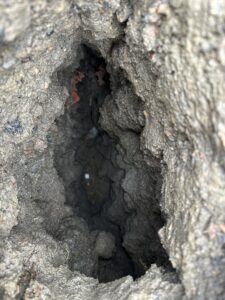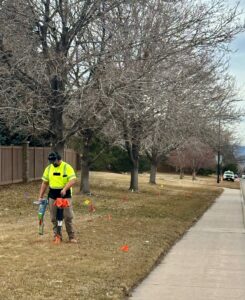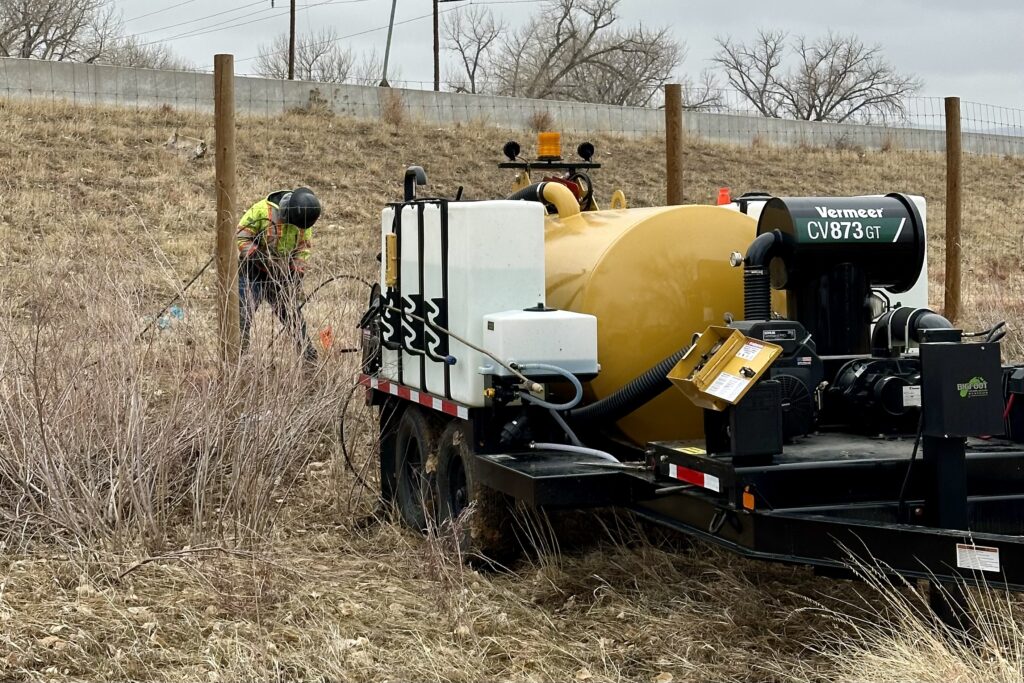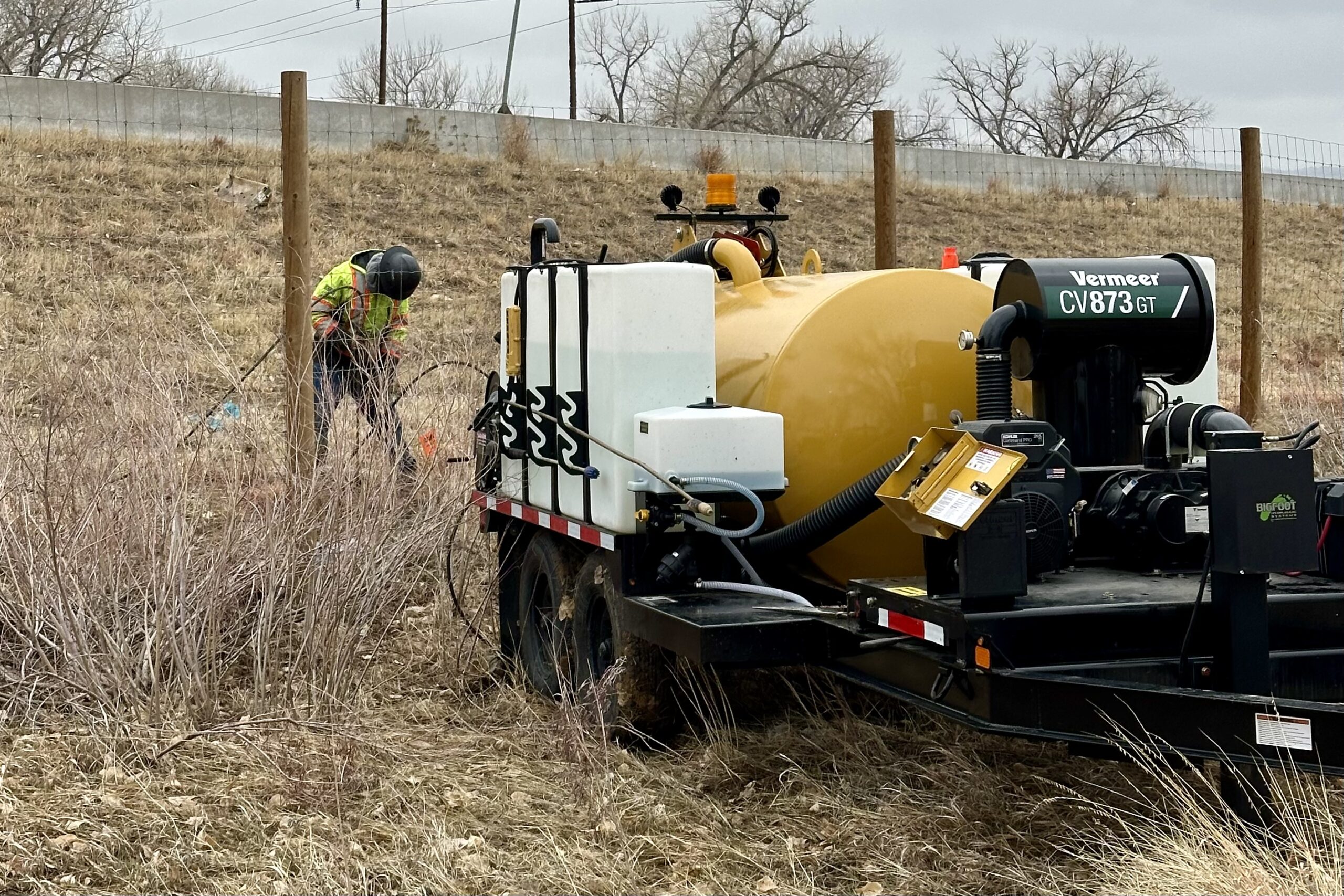While not immediately obvious to the general public, many types of construction involve an underground aspect. General building construction (both residential and commercial/industrial) involves leveling and sometimes excavating earth to create foundations and basements. Even road construction generally requires civil construction to level road beds and reduce uneven ground.
Utility construction has the highest exposure to underground construction. When utilities install water, sewer, electrical, natural gas, and fiber optic connectivity, often times they are installed underground. Underground utilities have the advantages of being out of the public eye and generally protected from unwanted damage. But the unseen nature of underground utilities also creates a risk of strikes and damages.
The Risks of Underground Utility Strikes
While building utilities and other services underground protects them from most dangers, damages still occur at an alarming rate. The Common Ground Alliance estimates that excavation-related utility damages cost ~$30 Billion annually.

In 2023 (the last year of DIRT analysis at the time of writing), there were >180,000 unique damage events. This means that on average a damage causes $160k to remediate. Of these damages, water & sewer system strikes account for ~25% of the total.
Not only are damages expensive to fix, they also cause service interruptions for customers . When a utility is damaged during a strike, the involved company must shut down service to allow for repair crews to fix the problem. This means that paying customers can be left without service during this period.
Additionally (and most importantly for Trace), utility strikes can be very dangerous for crews operating equipment. While hitting a fiber optic line or buried sprinkler system may not present significant danger, other utilities (like natural gas and electrical) could be deadly for personnel involved.
Finally, construction companies that regularly damage utilities may be in jeopardy of legal action. Some municipalities have begun disapproving right-of-way construction permits for builders who regularly damage utilities. In terms of Colorado utility damages, the City of Colorado Springs has begun fining companies who are repeat offenders on damages.
What Is Utility Locating?
Prior to starting an underground construction project, builders are required to conduct utility locating to identify the location of existing utilities. This process of utility locating is in an effort to reduce accidental strikes and Colorado utility damages.
In Colorado, SB18-167 governs the rules around utility locating. This important law establishes the need for (1) utility operators to locate their existing lines and (2) for new installations to be “locatable.” These measures were intended to enable addition construction while reducing the risk of a strike. The enactment of this Colorado law was driven by a 2016 study by the United States Pipeline and Hazardous Materials Safety Administration (PHMSA). The PHMSA study found that Colorado’s underground utility locating process was inadequate and required updating.
Methods for conducting utility locating
Since underground utilities are by the nature out of public view, specialized methods are needed to accurately locate them. These methods can include (in order of ascending precision):
- Utility Maps / Engineer Drawings – historical maps at the utility or local municipality should indicate locations of installed utilities, but in reality are not exact enough for construction purposes.
- Electromagnetic sensors (EM) – EM sensors utilize an induced signal from installed utilities to locate the lines through a special sensor. These sensors are generally utilized by professional locators. The process relies on either metallic lines or the inclusion of a tracer wire.
- Ground Penetrating Radar (GPR) – GPR actively transmits a signal and then reads the feedback it receives from objects underground. This system is used to locate non-metallic lines.
- Pot holing – Pot holing is the process of digging or hydro-excavating small holes in order to put eyes on an existing utility line. These holes are dug at strategic locations since the entire line cannot be reasonably un-earthed.

Methods for marking underground utilities after locating
After the existing utilities are located, they must be temporarily marked to enable the construction crew to work. These utility markers must be obvious but also temporary to allow easy restoration to pre-construction conditions.
Underground utility markers include:
- Water based construction paint – this spray paint is water based (so It eventually washes away) and optimized for spraying on the ground quickly
- Utility marking flags – these small metal and plastic flags can be useful in snowy conditions or soils / vegetation where painting is not ideal
Process for utility locating for fiber optic construction
Construction managers or fiber optic project managers call in locates through 811 Colorado. The PM can either call or submit a ticket through the website. This queues the utility operator or their sub-contractor to dispatch a locator.
The locator drives to the future construction site and employs a utility locating device to find the buried utility. Once the utility line has been located, the locator will mark the location using an approved method (generally with a color specific to their utility).

The Role of Utility Potholing (Hydro and Air Excavation)
Trace Fiber Services (and associated Ikon Fiber), regularly use hydro excavation to get eyes on utilities to enable safe Colorado underground construction.
What is utility hydrovac-ing and why is it important for fiber construction in Colorado?
Colorado utility construction and repair companies utilize hydrovacs for a few key tasks in OSP fiber optic network construction. Hydrovacs (as the name implies) utilize compressed water to break up soil and then a vacuum system to remove the soil and rock. This back and forth system allows crews to safely dig while minimizing the risk of damaging buried utility lines.

How do crews use a hydrovac to enable safe underground construction in Colorado?
Trace Fiber’s crews hydrovac units in a number of ways to safely install and repair Colorado fiber OSPs. These include:
- Pot holing to confirm utility locations prior to directional drilling / boring or trenching
- Pot holing to confirm underground utility locations to develop plan and profile for permitting
- Creation of entry /exit pits to enable underground directional drilling
- Preparation for installation of handholds and other support structures
- Cleanup of drill mud during directional drilling
- Exposure of damaged utility lines during emergency fiber response callouts
Who makes hydrovac units for telecom construction?
There are a number of companies that manufacture hydrovac units. These include:
- Trailer based hydrovac units:
- Vermeer
- DitchWitch
- TruVac
- Vac-Con
- Truck based hydrovac units:
- Supervac
- Kaiser Premier
- TruVac
- CustomVac

